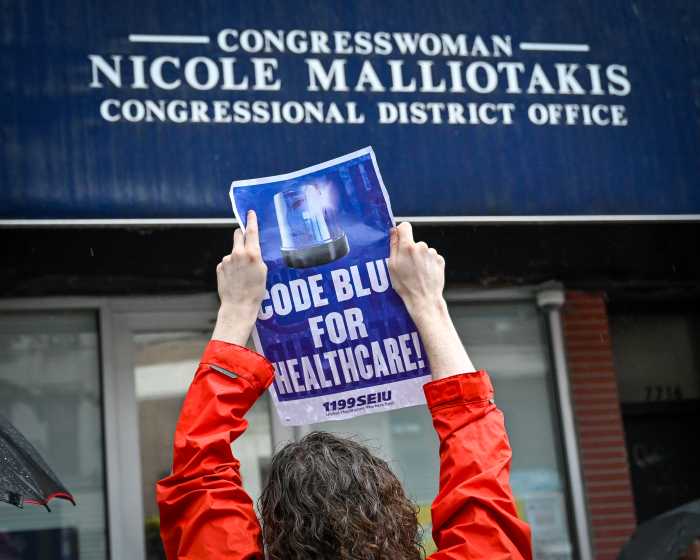BY LINCOLN ANDERSON | The new Lenox Hill HealthPlex recently successfully helped treat a patient suffering a heart attack, two others with stroke symptoms and another with a dangerous, bleeding aneurysm in his brain. These are precisely the kind of life-threatening conditions critics said the new freestanding emergency department wouldn’t be able to help with.
As of Mon., Sept. 22, the HealthPlex — at W. 12th St. and Sixth Ave., in St. Vincent’s Hospital’s former O’Toole Building — had been open 67 days and seen a total of 4,290 patients.
According to Dr. Eric Cruzen, the facility’s director of emergency medicine, 31 percent of patients to date have been Category 1 or 2 on the HealthPlex’s five-point “emergency severity index.”
“Generally, people who score 1 or 2 are very ill with things that are true emergencies and need immediate care,” he said.
Over all, about 7.5 percent of the HealthPlex’s patients have required hospitalization at the facility of their choice.
Earlier this month, the HealthPlex saw a woman walk in off the street with a type of heart attack known as an “ST elevation myocardial infarction.”

“That’s the type of heart attack that has to go immediately to the cardiac catheterization lab to have a balloon angioplasty and / or stent,” Cruzen explained. “We were able to evaluate, stabilize her, begin her treatment and immediately transfer her directly to Beth Israel’s cardiac cath lab. All of this was done well within the goal time of 90 minutes from presentation to angioplasty. In fact, the patient was at our facility less than 20 minutes from door to door. She did very well. So, for those who asked, ‘What if I go to the HealthPlex and am having a heart attack?’ we now have an actual example to support the fact that the care is top-notch, fast and effective.”
Two other patients who came to the HealthPlex with stroke symptoms were given the clot-busting medication TPA. One of them, a woman, had walked in suffering sudden onset of weakness of one arm and one leg, plus difficulty speaking. Clots can cause brain tissue to die.
“Both did well” after treatment, Cruzen said.
In late August, a patient walked into the HealthPlex “with the worst headache in his life,” which had started just minutes before. It turned out to be a brain aneurysm — the less-common type of stroke, when the wall of a vessel becomes weak and starts to balloon out, causing severe bleeding. This often can be fatal in a short amount of time.
“He was seen immediately and had a CT angiogram that showed an aneurysm bleeding in his brain,” Cruzen said. “He was rushed to the specialized neuro-interventional suite at Lenox Hill Hospital and underwent a complex coiling procedure that stopped the bleeding and saved his life.”
As Cruzen explained it, the coiling procedure involves inserting a very thin catheter into a blood vessel in the leg, then carefully threading it up to where the bleeding is in the brain. A small metal coil is then deployed from the catheter’s end that allows the neurosurgeon to stop the bleeding.
The patient recovered at Lenox Hill Hospital and was discharged several days later.
“With conditions like aneurysms, time from symptom onset to diagnosis is critically important,” Cruzen said. “I am so happy that the HealthPlex was here for this gentleman.
“We’ve really seen the whole spectrum of emergency medicine cases — heart attacks, strokes, aneurysms, pneumonia, broken bones and sepsis, as well as coughs, colds, twisted ankles, cuts, scrapes and bruises,” he said. “We’re seeing about 75 patients a day now, about half of which are coming to us via E.M.S. ambulances. We’ve transferred folks [for higher-level care] to Beth Israel, N.Y.U., Mt. Sinai, Cornell, Columbia and Lenox Hill.
“We’ve really enjoyed becoming a part of the Village and look forward to a long future of caring for our neighbors.”


































